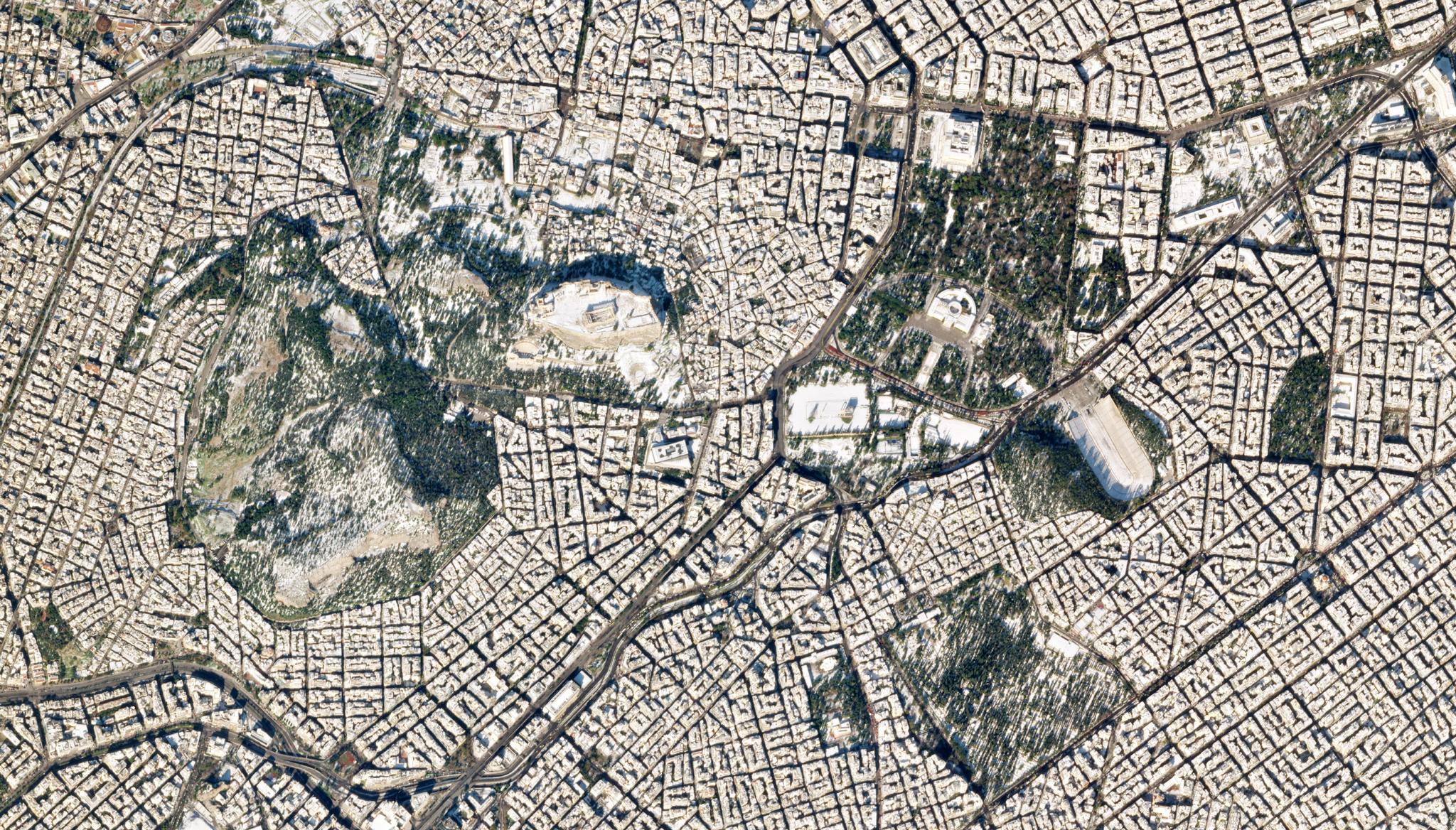Researchers Leverage Deep Learning Classification Models and PlanetScope Data to Facilitate SDG 11 Indicator Computation
Image above: Planet satellite image taken of Athens, Greece covered in snow on January 26, 2022. © 2022, Planet Labs PBC. All Rights Reserved. In 2015, the United Nations General Assembly first declared the Sustainable Development Goals. These 17 interconnected global goals were set to be achieved by the year 2030 and ranged from ending global hunger (SDG 2) to protecting life below water (SDG 15). With the majority of the global human population residing in urban locations, the United Nations also called for SDG 11 focused on the progression of sustainable cities and communities. This goal aims to shape urban life towards a healthy and resilient future. To support efforts to quantify and report progress on this goal, researchers at Aristotle University of Thessaloniki in Greece leveraged Google’s cloud environments, including Google Earth Engine, with PlanetScope and Sentinel-1 data to evaluate urban open spaces and land allocated to streets over Athens, Greece. The study utilized a PlanetScope mosaic of the metropolitan area and calculated the Normalized Difference Vegetation Index (NDVI) from the PlanetScope bands to distinguish vegetation from urban materials like buildings and streets. Using deep learning classification models for processing these datasets, the researchers were able to find a potential method to advance reporting and analyses of SDG sub-indicator 11.7.1 which calls for universal access to safe and healthy green public spaces in urban environments. “This study is, to our knowledge, the first to map all land use components of indicator 11.7.1. The methodology developed herein can serve as a roadmap for the development of an end-to-end, automated workflow, for national statistical offices to calculate indicator 11.7.1 in Greece,” wrote the authors. The full study can be found in Remote Sensing.

Ready to Get Started
Connect with a member of our Sales team. We'll help you find the right products and pricing for your needs


